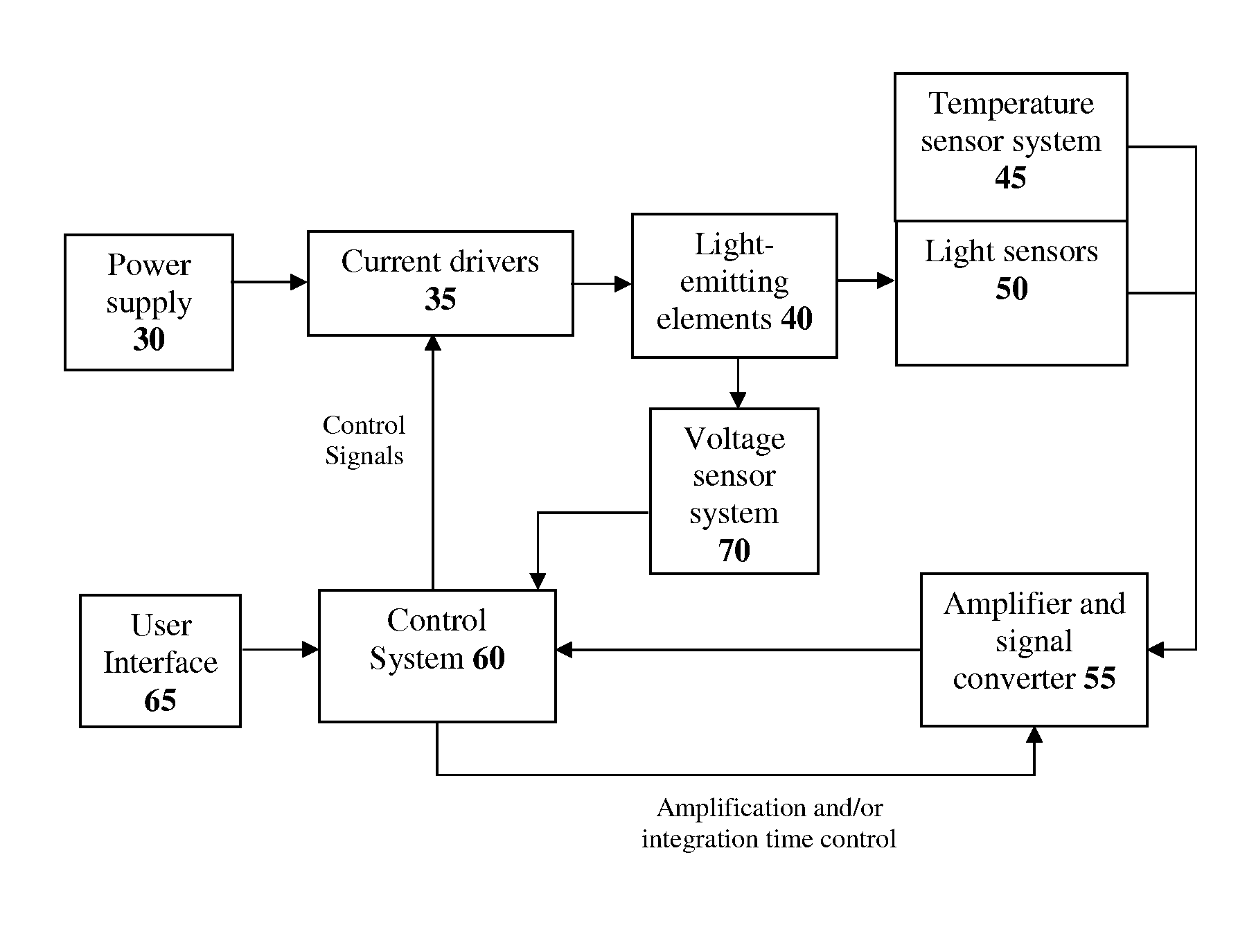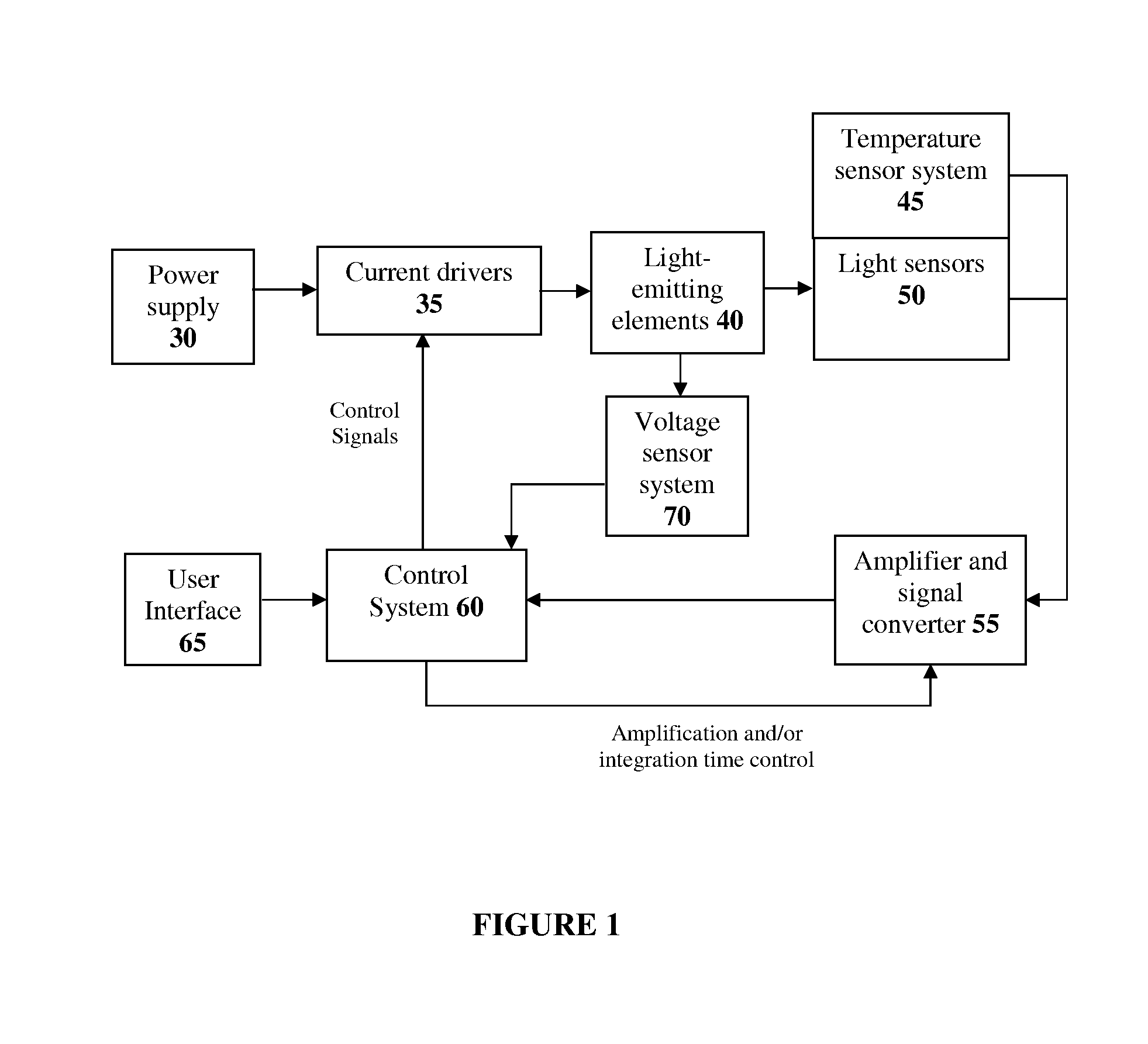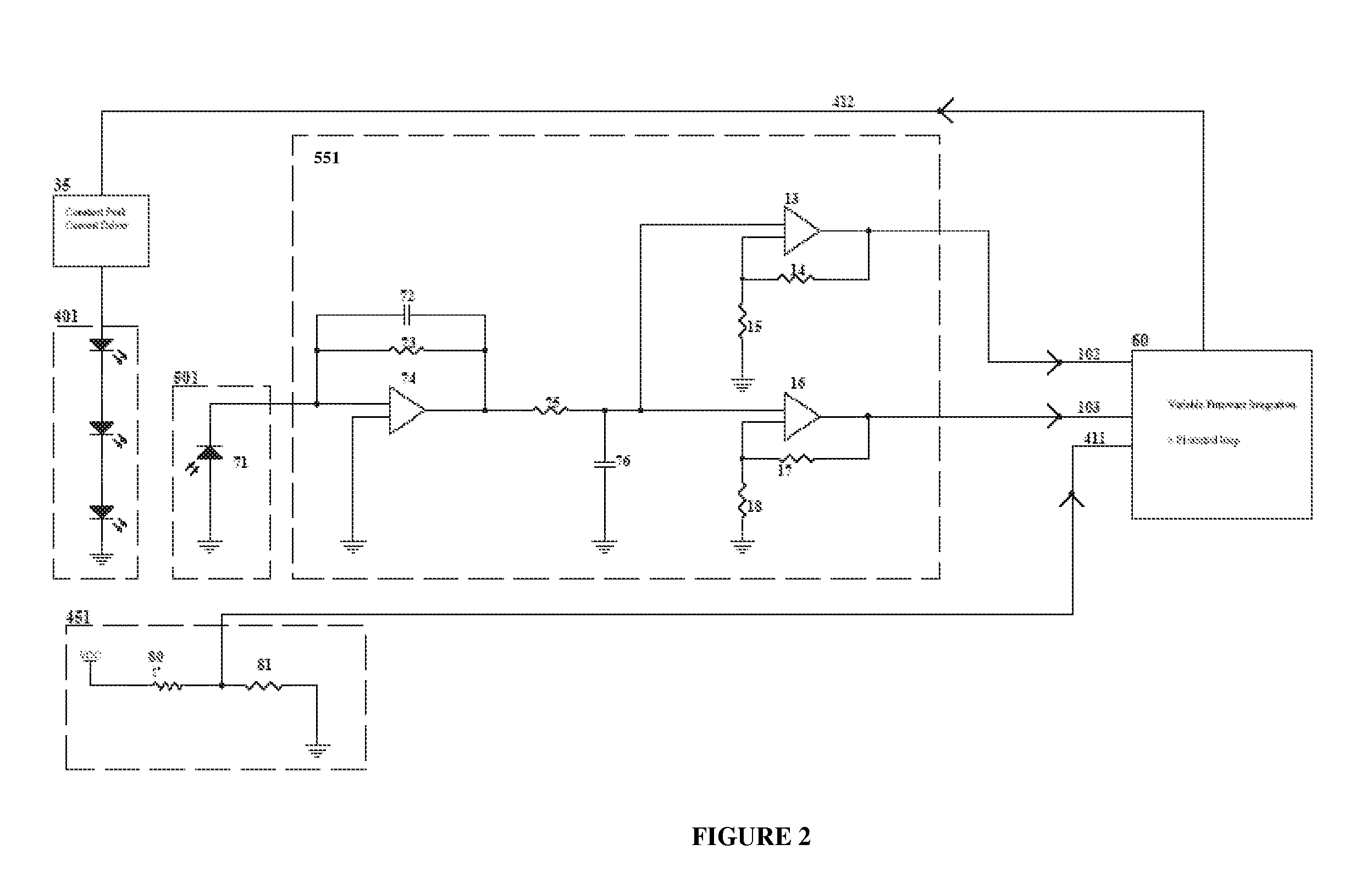Method and system for feedback and control of a luminaire
a technology of digital control and feedback, applied in the direction of power management, lighting and heating equipment, instruments, etc., can solve the problems of resolution, resolution, and high cost of the microcontroller, and achieve the effect of control system, and improving the accuracy of the measuremen
- Summary
- Abstract
- Description
- Claims
- Application Information
AI Technical Summary
Benefits of technology
Problems solved by technology
Method used
Image
Examples
example 1
Solid-State Lighting Luminaire
[0135] According to one embodiment of the present invention a solid-state lighting luminaire can be configured as illustrated in FIG. 1, wherein extended pulse width modulation as defined above is implemented in the control system 60 using the extended pulse code modulation method as illustrated FIGS. 15 to 17. This extended pulse code modulation method can be implemented in firmware on a commercial microcontroller which can form part of the control system 60. The light sensors 50 are broadband sensors and are associated with specific filters enabling the sensors to detect light in one predetermined wavelength region, for example red, green and blue regions. This format of light sensors are integrated with associated amplification stages as illustrated in FIG. 6. Additional functions may also be implemented, such as for example monitoring of voltage sensors 70 and temperature sensors 45 by the control system.
[0136] This information is used by the cont...
example 2
Solid-State Lighting Luminaire
[0137] According to one embodiment of the present invention a solid-state lighting luminaire can be configured as illustrated in FIG. 1, wherein extended pulse width modulation as defined above is implemented in the control system 60 using the extended pulse width modulation method as illustrated FIGS. 12 to 14. This extended pulse width modulation method can be implemented in firmware on a commercial microcontroller which can form part of the control system 60. The light sensors 50 are broadband sensors and are associated with specific filters enabling the sensors to detect light in one predetermined wavelength region, for example red, green and blue regions. This format of light sensors are integrated with associated amplification stages as illustrated in FIG. 6. Additional functions may also be implemented, such as for example monitoring of voltage sensors 70 and temperature sensors 45 by the control system. This information is used by the control s...
example 3
Solid-State Lighting Luminaire
[0138] According to one embodiment of the present invention a solid-state lighting luminaire can be configured as illustrated in FIG. 1, wherein extended pulse width modulation as defined above is implemented in the control system 60 using the extended pulse code modulation method as illustrated FIGS. 15 to 17. This extended pulse code modulation method can be implemented in firmware on a commercial microcontroller which can form part of the control system 60. The light sensors 50 are narrow band sensors which detect light in one predetermined wavelength region, for example red, green and blue regions. These light sensors are integrated with associated amplification stages as illustrated in FIG. 2. Additional functions may also be implemented, such as for example monitoring of voltage sensors 70 and temperature sensors 45 by the control system. This information is used by the control system for feedback and feedforward control which is implemented in f...
PUM
 Login to View More
Login to View More Abstract
Description
Claims
Application Information
 Login to View More
Login to View More - R&D
- Intellectual Property
- Life Sciences
- Materials
- Tech Scout
- Unparalleled Data Quality
- Higher Quality Content
- 60% Fewer Hallucinations
Browse by: Latest US Patents, China's latest patents, Technical Efficacy Thesaurus, Application Domain, Technology Topic, Popular Technical Reports.
© 2025 PatSnap. All rights reserved.Legal|Privacy policy|Modern Slavery Act Transparency Statement|Sitemap|About US| Contact US: help@patsnap.com



